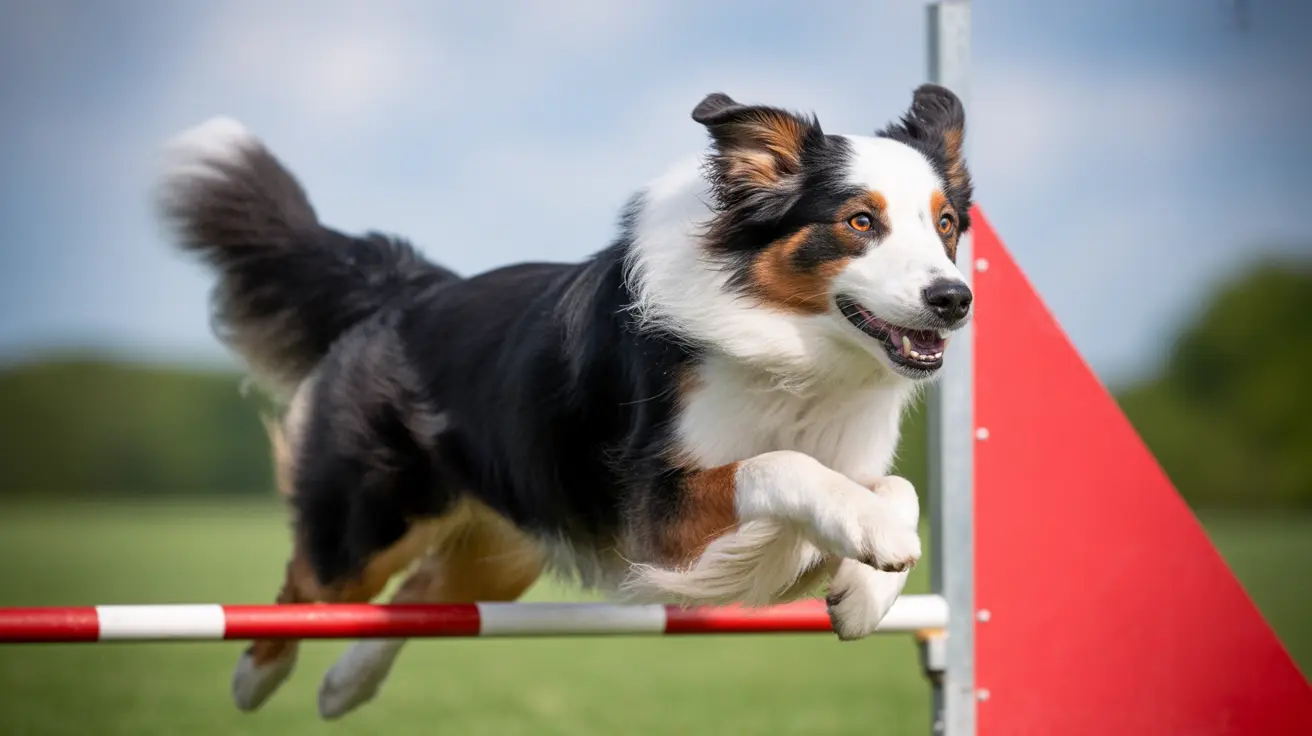For dog owners, understanding the dangers of common household ingredients is crucial for keeping their pets safe. One particularly hazardous food item that deserves special attention is the onion. While this vegetable is a staple in human cuisine, it poses a severe threat to canine health, potentially causing life-threatening complications if ingested.
The danger lies in a toxic compound called N-propyl disulfide, which can cause devastating damage to a dog's red blood cells. What makes this threat particularly concerning is that all parts of the onion plant—including the bulb, leaves, juice, and even processed forms like onion powder—can trigger serious health issues in dogs.
Understanding the Allium Family Threat
Onions belong to the Allium family, which includes other potentially dangerous plants like garlic, chives, and leeks. These plants contain thiosulphate compounds that dogs' bodies cannot properly process, unlike humans. This fundamental biological difference makes dogs particularly susceptible to onion toxicity. Even a small ingestion can lead to severe health complications for your pet.
Common Sources of Exposure
Dogs may be exposed to onions through a variety of sources in and around the home. It's important for owners to recognize all the potential ways their pets could ingest onions, either deliberately or accidentally:
- Fresh onions used during food preparation, which might be dropped on the floor or left within reach.
- Onion powder hidden in seasonings and processed foods, making it a hidden danger in many snacks or prepared meals.
- Table scraps containing onion ingredients, which are commonly shared with pets without considering their harmful contents.
- Discarded food waste containing onions, as curious pets may rummage through the trash or compost bins.
Recognizing Onion Poisoning Symptoms
Early detection of onion toxicity can be crucial for successful treatment and recovery. The toxic effects may not be immediately obvious, so owners must be vigilant for any changes in their pet's health and behavior following potential exposure. The signs of onion poisoning typically develop within 24 hours to several days after ingestion and may include a range of symptoms, which often escalate in severity.
Initial Symptoms
- Vomiting and diarrhea, which reflect the digestive system's response to the toxic compounds.
- Loss of appetite, as dogs may become disinterested in food due to nausea or abdominal pain.
- Abdominal discomfort, which your pet may show by whining, restlessness, or reluctance to move.
Advanced Warning Signs
- Extreme lethargy, as the body struggles with decreased oxygen delivery from damaged red blood cells.
- Pale or bluish gums, indicating a deficiency in oxygen-carrying cells, a serious warning sign of anemia.
- Rapid breathing, which develops as your dog tries to compensate for reduced oxygen levels.
- Dark-colored urine, resulting from the breakdown of red blood cells and excretion of hemoglobin.
- Increased heart rate, another compensatory mechanism to boost oxygen delivery throughout the body.
Critical Toxic Dosage Information
The toxic threshold for onions is alarmingly low. Veterinary research shows that consuming just 0.5% of a dog's body weight in onions can trigger poisoning. This means that even sharing seemingly harmless amounts of onions or food containing onions can have dangerous consequences. For perspective, the following examples illustrate toxic doses:
- A 10-pound (4.5 kg) dog: Toxic dose = 0.5 ounces (14 grams) of onion — roughly the size of a small slice.
- A 50-pound (23 kg) dog: Toxic dose = 2.5 ounces (70 grams) of onion — about half a medium onion.
Because some processed foods and leftover meals contain concentrated onion flavors and powders, it's easy to unintentionally expose your pet to toxic levels.
Emergency Response Protocol
If you suspect your dog has consumed onions, immediate action is essential to improve the chances of a full recovery. Time is critical, and delays can significantly worsen outcomes:
- Contact your veterinarian immediately and provide detailed information about your dog's condition and exposure.
- Document the amount and type of onion consumed, as well as any other relevant details, such as the food item or recipe involved.
- Note the time of ingestion so the veterinary professional can determine the likely progression of symptoms.
- Follow only professional medical guidance. Do not attempt home remedies as they may delay necessary treatment or worsen the situation.
Professional Treatment Options
Once at the veterinary clinic, your dog may undergo several treatments, depending on the severity and timing of ingestion:
- Induced vomiting, if the onion was consumed recently, to remove as much of the toxin as possible before absorption.
- Activated charcoal administration to help absorb remaining toxins in the digestive tract.
- Intravenous fluid therapy to flush toxins from the system and maintain hydration.
- Blood transfusions, in severe cases, if there is significant damage to red blood cells and resultant anemia.
- Continuous monitoring of blood values to assess recovery and guide further treatment.
Each case is unique, so the precise treatment protocol will be tailored to your dog's symptoms and health status.
Prevention Strategies
Preventing onion toxicity requires a proactive approach and constant vigilance from all members of the household. By being aware of the risks and educating those around you, the likelihood of accidental exposure can be greatly reduced.
- Store all onion products securely in places pets cannot access.
- Read food labels carefully, especially when offering processed foods or treats to your dog.
- Inform all household members, guests, and caretakers about the risks and keep everyone on the same page regarding pet safety.
- Secure garbage containers with tight-fitting lids to prevent scavenging.
- Never feed table scraps or leftovers to pets without first checking the ingredients for onion or related compounds.
- Keep gardens and pantries inaccessible to pets, as homegrown or stored onions can be tempting targets for curious dogs.
Long-term Recovery and Monitoring
With proper and timely treatment, many dogs can recover from onion toxicity. However, recovery time varies based on the level of exposure, the dog’s size and health, and the speed of intervention. Ongoing monitoring is essential, as some effects may persist or recur even after initial symptoms improve. Veterinarians may recommend regular blood tests to monitor recovery, especially regarding red blood cell counts and overall organ function.
During recovery, limit strenuous activity and follow specific care instructions provided by your veterinarian. Dietary adjustments or supplements may also be advised until your dog is fully healthy. In some cases, particularly with large or repeated exposures, long-term effects on blood health or organ function may require continued medical management.
Frequently Asked Questions
- What is onion toxicity in dogs? Onion toxicity is poisoning caused by dogs ingesting onions or onion-related products, leading to the destruction of red blood cells and resulting in anemia and other complications.
- Which parts of onions are dangerous for dogs? All forms—fresh, cooked, powdered, or dehydrated onions—are toxic to dogs, as the dangerous compounds are present in every part of the plant and do not break down with cooking.
- How much onion is toxic to a dog? Even small amounts (over 0.5% of your dog's body weight) can be toxic and should be strictly avoided at all times.
- What are the symptoms of onion toxicity in dogs? Symptoms include vomiting, weakness, loss of appetite, extreme lethargy, pale or bluish gums, increased heart rate, and dark-colored urine.
- How long after ingestion do symptoms appear? Symptoms can appear within 24 hours but, in some cases, may be delayed up to several days after ingestion, making early intervention critical if exposure is suspected.
- What should I do if my dog eats onions? Contact your veterinarian immediately for guidance. Attempting at-home treatment is not recommended due to the risk of rapid deterioration.
- Can onion poisoning be treated at home? Professional veterinary care is essential; at-home treatment is not safe or sufficient and may delay life-saving interventions.
- How is onion toxicity diagnosed in dogs? Veterinarians diagnose onion toxicity based on a combination of your dog's history (such as known or suspected onion ingestion), physical symptoms, and blood tests to check for anemia and the presence of Heinz bodies (damaged red blood cells).
- Is onion powder as dangerous as fresh onions for dogs? Yes, onion powder is highly concentrated and equally, if not more, toxic for dogs compared to fresh onions. Even small amounts in seasoning blends can cause harm.
- How can I prevent onion toxicity in my dog? Keep all onion products out of your pet's reach, inform everyone in your household about the risks, and always check ingredient labels carefully before feeding your pet any new foods.
Understanding and preventing onion toxicity is a crucial aspect of responsible dog ownership. By staying informed and maintaining strict preventive measures, you can protect your beloved pet from this serious health threat. Remember that prompt action and professional veterinary care are essential if exposure occurs, and prevention is always the best strategy for keeping your dog safe and healthy.






